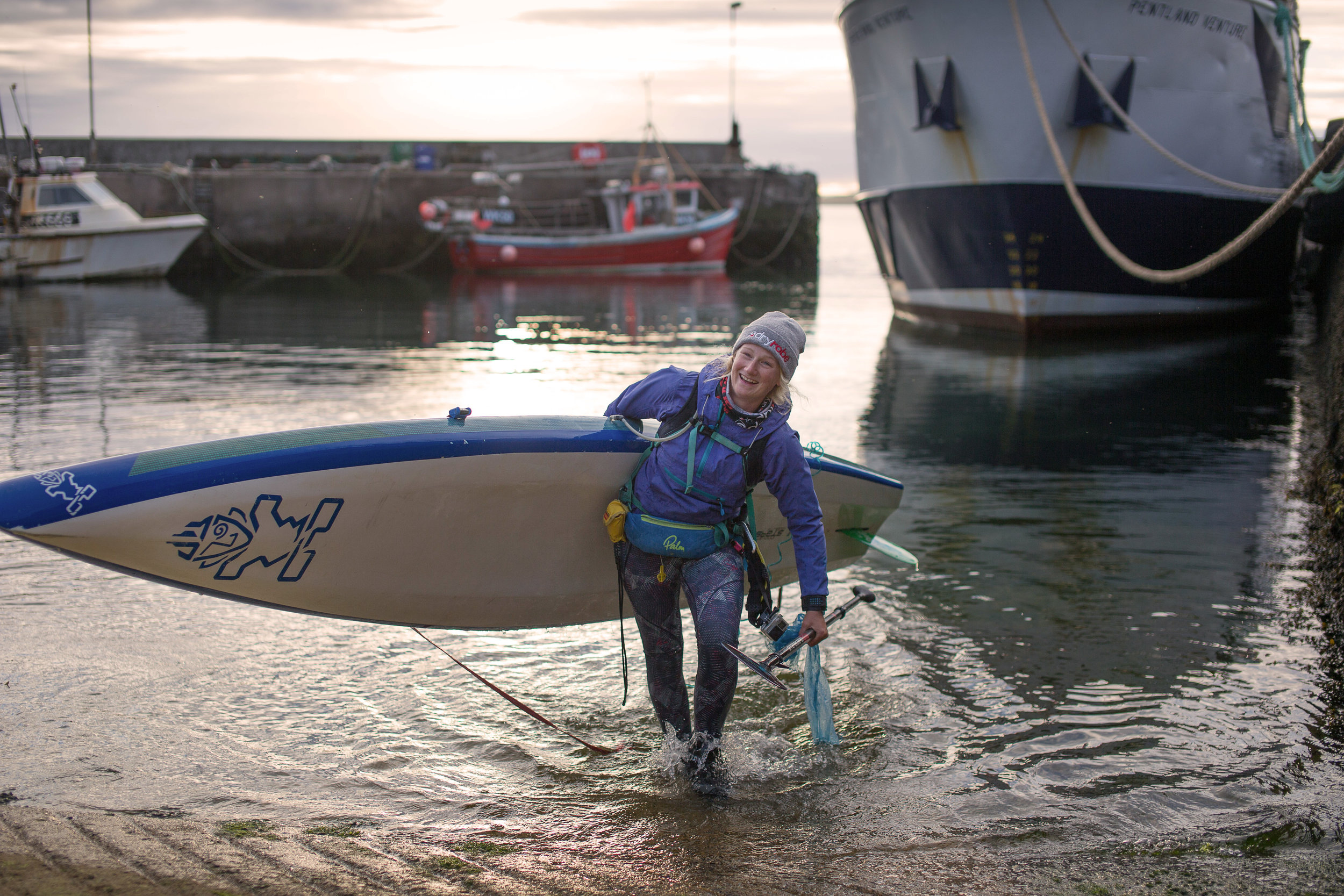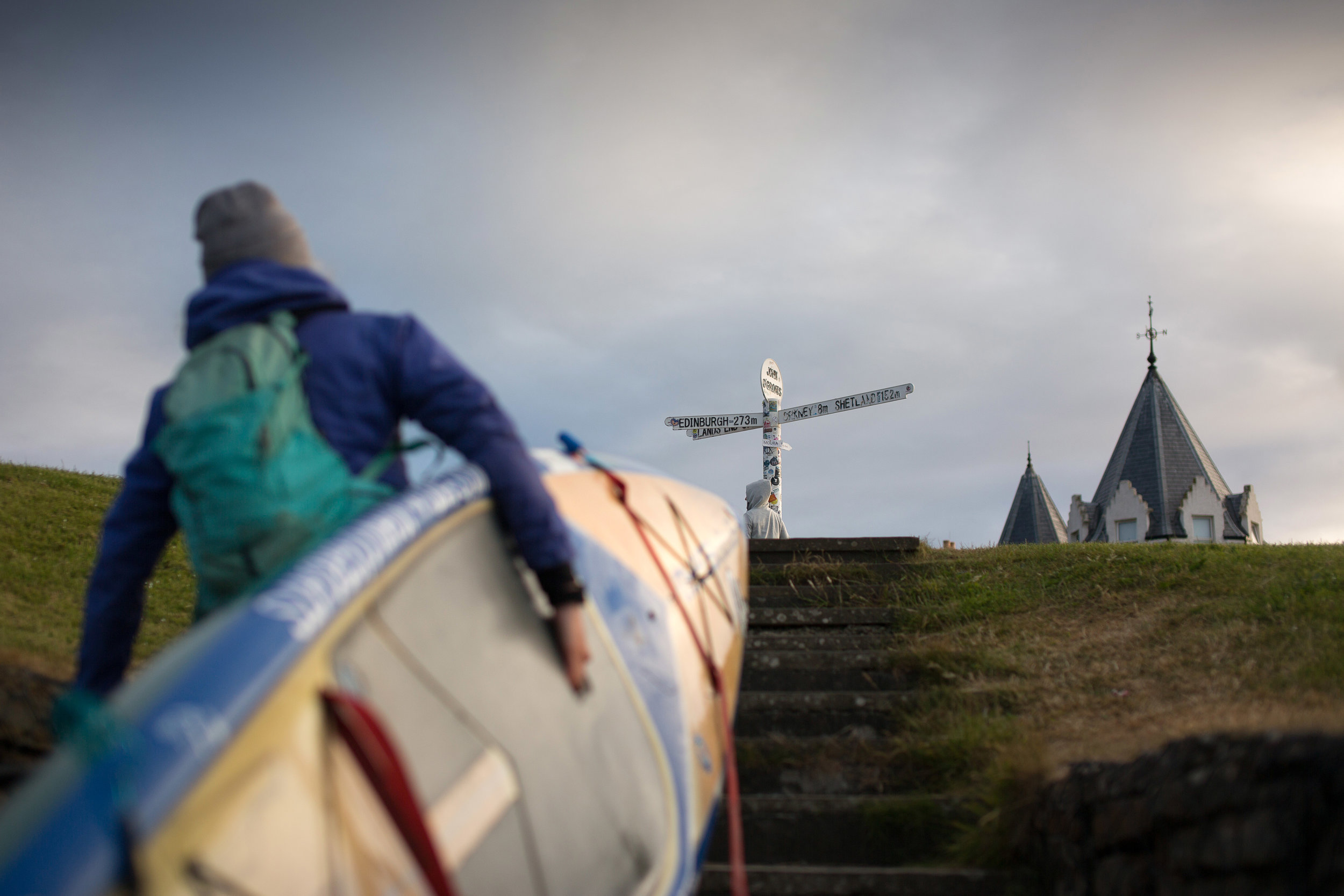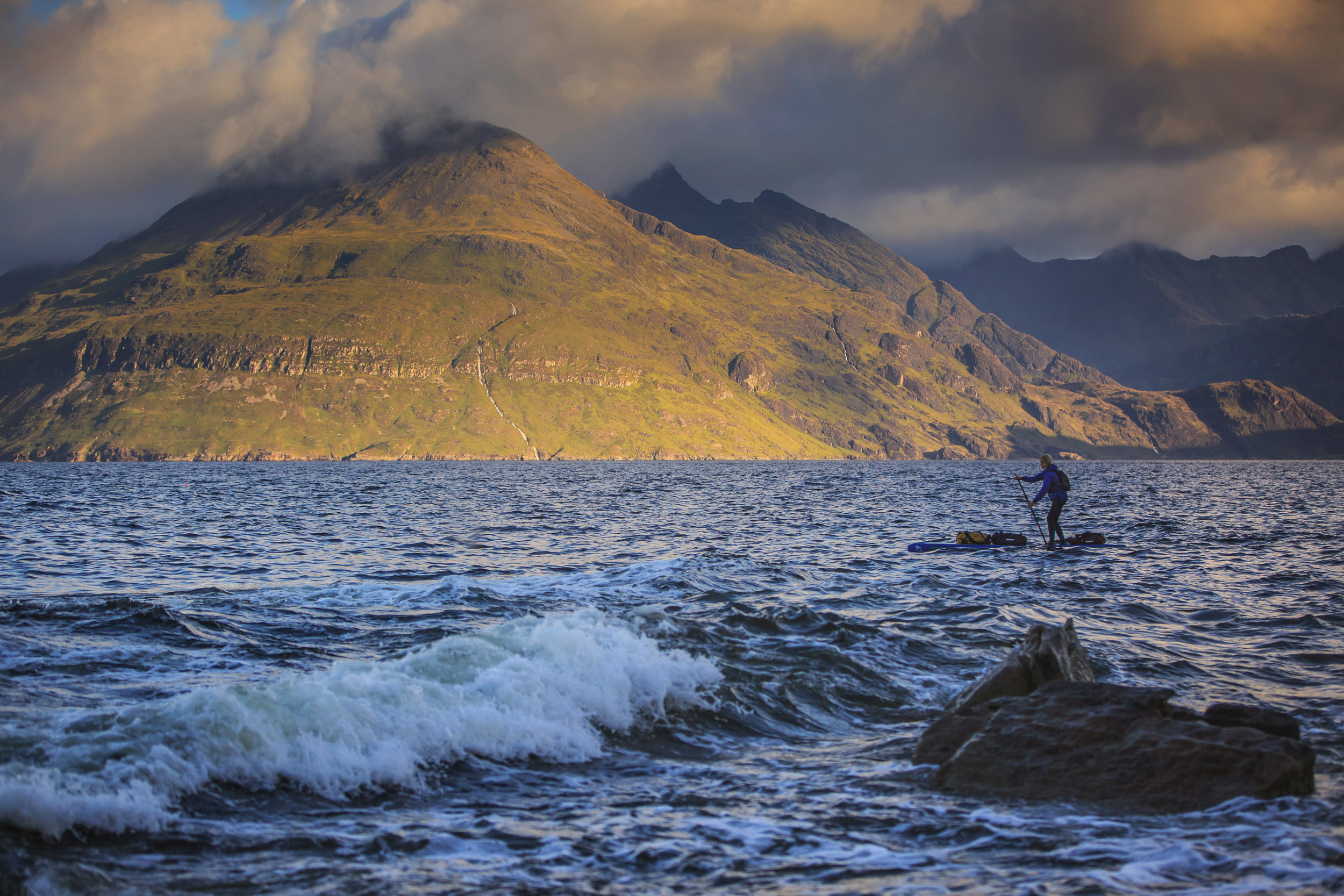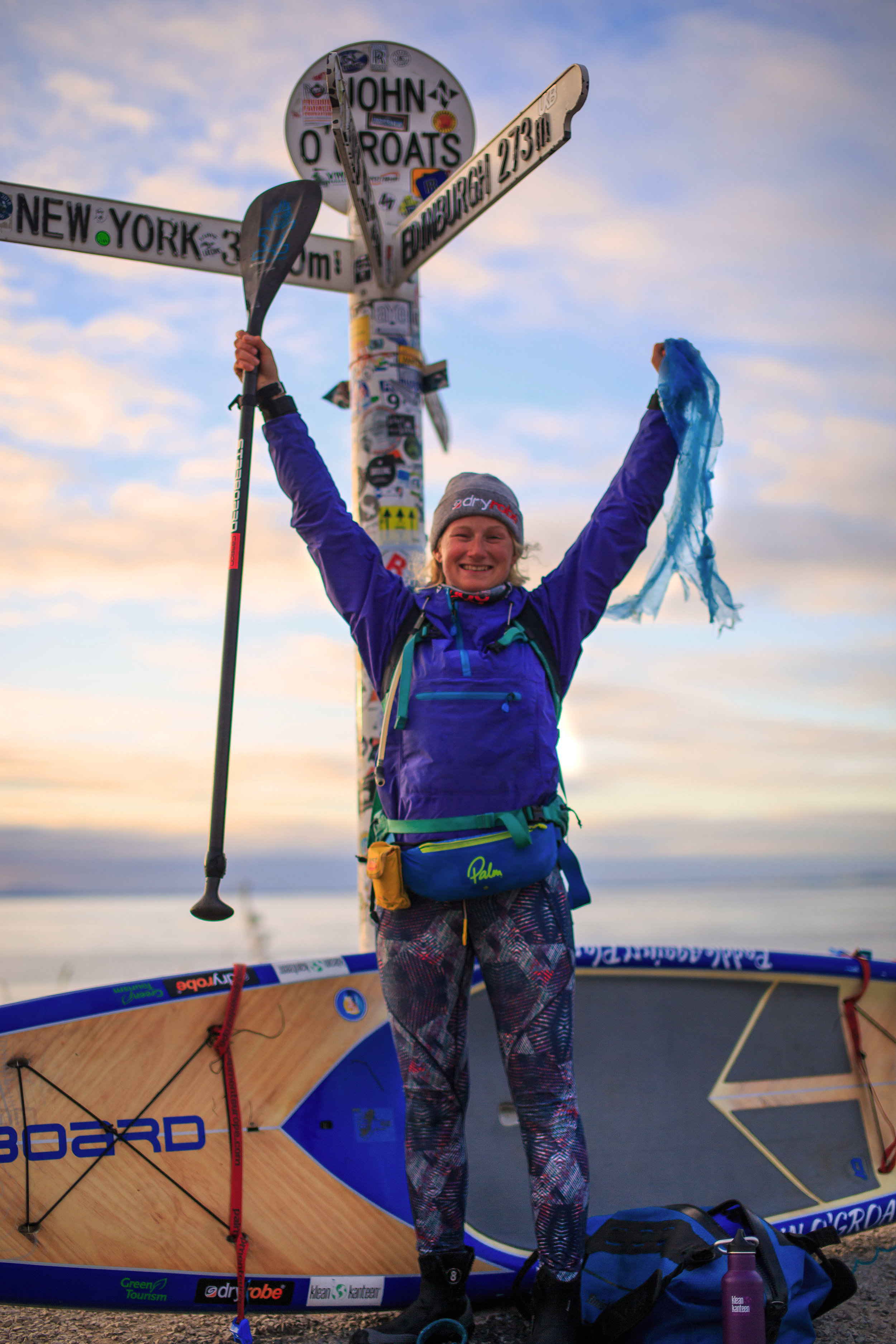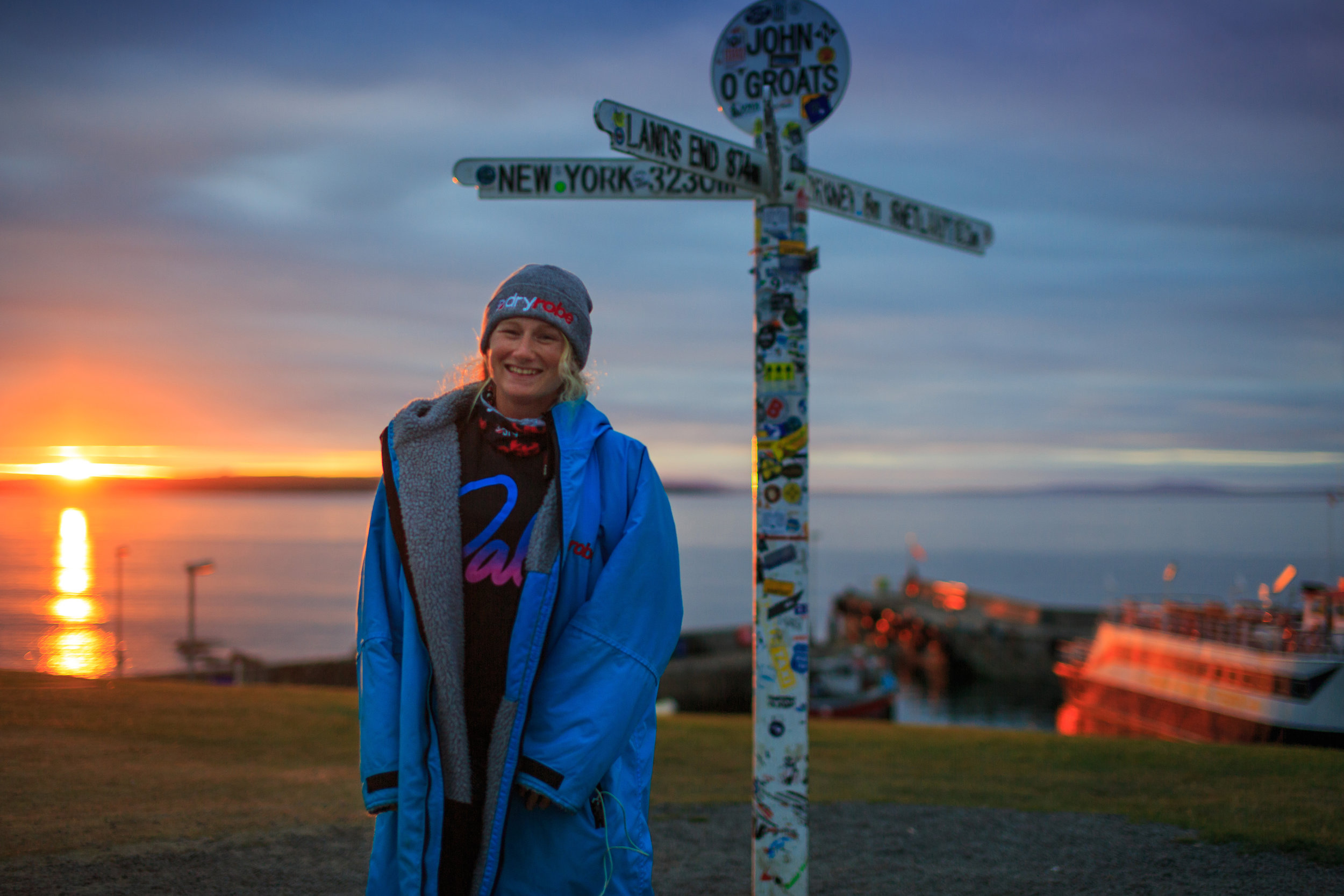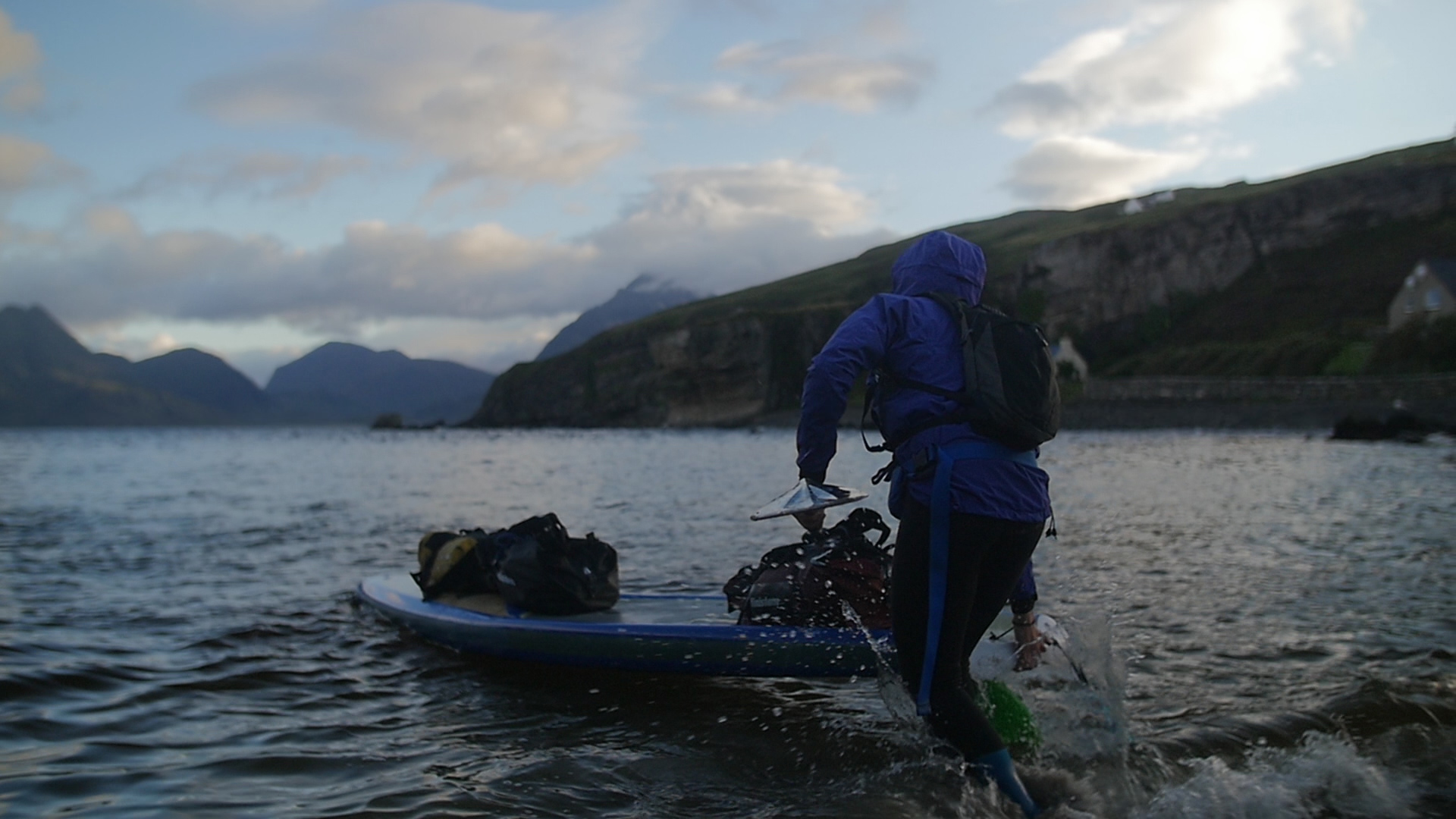SUP Land’s End to John O’Groats
A 1000 mile, world first solo stand up paddleboarding expedition the length of the United Kingdom.
Land’s End to John O’Groats is a popular route with cyclists and walkers; in fact it’s been completed on almost every mode of transport imaginable! But it had never been completed before on a stand up paddleboard. The route took in 1000 miles: The entire length of mainland GB, end to end, from Cornwall to the North of Scotland. I completed the expedition in 59 days, becoming the first person in history to do so, and setting a World Record for the fastest time.
This is an expedition I’d had in the back of my mind for years. 1000 miles of unrelenting paddling. A way to demonstrate that wherever we are in the UK we’re never too far from plastic pollution, but also to highlight all the amazing things happening the length of the UK to help tackle it.
I had estimated that the voyage would take 3-4 months to complete, and planned a mixture of coastal and inland paddling to connect the plastic we’re using inland with that out to sea.
I planned to paddle the route alone, with no support boat. I knew that a support boat would remove almost all danger, all need to carry kit, navigate or plan.
After a close call with the tides at Land’s End, the route took me up the Cornish coast through fog, 6 foot swell and countless tidal races. The water in May was surprisingly cold, and the first few days I came off the water blue, shaking, and struggling to recover each day. After reassessing kit and nutrition, and with blue skies forecast for my trip up the North Devon coast and into the Bristol channel, the hypothermia became a thing of the past and I was averaging 20-30 miles a day. The awareness around plastic pollution in coastal communities in the South West is very noticeable, and especially compared to my previous expedition around the Cornish coast the amount of plastic on beaches seemed reduced! But it was still present at least in small amounts everywhere I landed, and I would regularly pull fishing rope, bottles, bags and balloons out of the water. The support I received was incredible, and filled me with hope for a collaborative approach to stopping plastic pollution at source.
My journey continued up the Bristol channel where I learnt an important lesson about calorie intake, “Bonking” (running out of fuel) 5 miles out to sea after an early start with only flapjack for breakfast. The feeling of being on the verge of collapse so far from safety, unable to see where I was meant to be paddling to, exhausted and scared, was one I didn’t ever want to have to experience again, and so nutrition became my priority from then on. I had always thought my mind would allow me to push through anything I asked of it - it seems this was the limit!
I continued on the raging water under the Severn Bridge and onto the canals at Sharpness. Instantly the environment changed, I had gone from the ocean where I felt at home to walled in waterways which were very new to me. And the pollution, especially around cities, was staggering.
The 200 miles of inland paddling took me up the River Severn, against the flow of the river which accounted for several days of tedious paddling. I witnessed bottles, bags and balloons freely flowing down the river, and out to sea. Lives inland affecting the environment at large.
One morning in Wigan I counted 691 plastic bottles floating in the canal in just the first hour of paddling. I was exhausted. 12 days without the danger of being lost at sea, no tides to chase, or winds to fight against, just endless days of exhausting and seemingly never ending paddling and portaging over locks. But that environment was amazing in its own way. There was so much life on the canals! From people living there in boats, to ducklings and swans swimming along, cows and horses lining the banks. Upon the approach to towns and cities the level of plastic pollution became noticeably higher, and the awareness around it seemed less.
I popped back out onto the coast at Blackpool, grinning from ear to ear at being back out to sea. I continued my expedition up the Cumbrian coast, dodging ferries across Morecambe Bay, and meeting passionate local beach cleaners in Barrow In Furness. Exhaustion had hit, and the expedition became as much of a mental battle as a physical one, losing energy far out to sea across bays and in serious need of encouragement to keep getting on the water day after day. Once on the water, surrounded by blue and life, my spirits lifted every time, I felt in control and strong, in my element.
I paddled over underwater forests and watched lobsters and crabs, fish and seals. I stopped at remote beaches and collected hundreds of plastic bottles. It was soon time to cross over to Scotland. This involved the first of many crossings across huge bays; this particular one was the Solway Firth, through an offshore windfarm. It was spectacular, paddling through a forest of enormous structures! I reached Scotland and felt like I’d come home.
Scotland was spectacular from the minute I arrived. Mind blowing sunsets, huge barrel jellyfish, dolphins and mountains. Soon came the most challenging section of the trip: The Mull of Galloway, a headland reaching far out into the Irish Sea. Here nine tides meet; it is renowned for tidal races, standing waves and shipwrecks. The only window of opportunity I had to get around the Mull was at 3am, and I was still 14 miles away across a military firing range. I set off at 11.30pm after the last sliver of light had left the sky, paddling on my knees for fear of falling into the dark, choppy water which wasn’t offering any help. I arrived at the Mull an hour too early. I could hear, but not see, water rushing somewhere nearby. It was too late, I was sucked into the tidal race and around the point. I had no option but to go with the flow of the water, but as the sun started to rise, relief took over from fear as I realised I had made it around the point unscathed.
I stopped at a remote beach, chaperoned into the inaccessible bay by some curious seals. The beach was piled high with plastic, home to these beautiful creatures.
I made it to Portpatrick just before storm Hector and his 50mph winds arrived. I was taken in by local people, given shelter, food and company; and what good company it was! Proud locals who ran beach cleans, educated their children about plastic and refused to use single use plastic in their businesses. The pride with which they implemented whichever positive changes they were able to make filled me with hope and love. Refuelled and revitalised I continued North, for the Isle of Arran.
The crossing to Arran was the most terrifying paddle of the whole expedition. It was 20 miles across the firth of Clyde, and a storm was forecast for just after I planned to touch down. It came early, and 12 miles out to sea, exhausted from the paddling effort, 30 mph winds arrived kicking up head high waves, whistling around my ears and turning the sea black and obscuring my vision. It was everything I could do to remain calm. I arrived at the island soaked to the bone and unable to stand.
The remainder of the West coast of Scotland became a game of endurance. I was averaging 30 miles a day, often 8-10 hours of paddling, and mastering the endurance mindset became a necessity. I found inspiration and motivation in nature, and focussed on mindfulness where I could. Maintaining determination was tough, and some days each paddle stroke seemed impossible.
After crossing the Caledonian canal from West to East, I continued up the North east coast of Scotland, a series of very early starts to catch the tides, setting off from Inverness at 1am. The North East coast of Scotland was my favourite section of the whole trip; enormous cliffs and sea stacks rising from clear ocean, lined with hundreds of thousands of noisy sea birds, and kelp forests with seals playing in them below. I made it to John O’Groats after 59 days, exhausted, emotional, ecstatic and relieved.
Despite the enormous amount of plastic I found on the trip, I wanted to focus on the positives, which is that people the length of the UK are looking for, and implementing, ways they can be a part of the solution. Individuals, schools, businesses, organisations and even governments are stepping up to reduce the amount of single use plastic used at source, clean beaches, perform research, raise awareness and implement policy change to encourage recycling. There is hope! But there is still work to be done. I believe we need to urgently reconnect our lives inland to the oceans, understand the importance of the oceans regardless of our geographical location and continue to work together to protect them.
Collaboration is key, and with the passion with which the issue is being tackled on so many levels, maintaining the momentum is essential. However, I believe the most essential piece of the puzzle is reconnecting each and every one of us to nature: time spent connecting to ourselves in nature is essential for our physical and emotional wellbeing, for nurturing a love for our planet and a desire to protect it.
